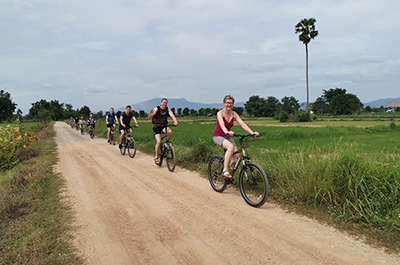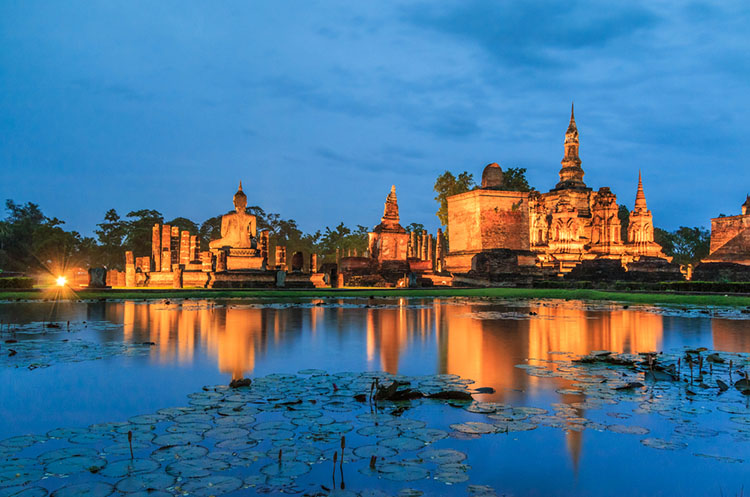
Central Zone
The central zone is the most visited of the Sukhothai Historical Park. The zone contains the remains of old Sukhothai, a rectangular town surrounded by multiple walls and moats.
The area of three square kilometers contains 21 structures set in a well kept park like setting with several lotus flower filled ponds. Contained in the central zone are ancient structures some of which predate the Sukhothai era, active temples, the Ramkhamhaeng National Museum and the King Ramkhamhaeng monument.
Four gates in the city walls provided access to old Sukhothai town; Or gate (West), Namo gate (South), Kamphaeng Hak gate (East) and Sanluang gate (North).
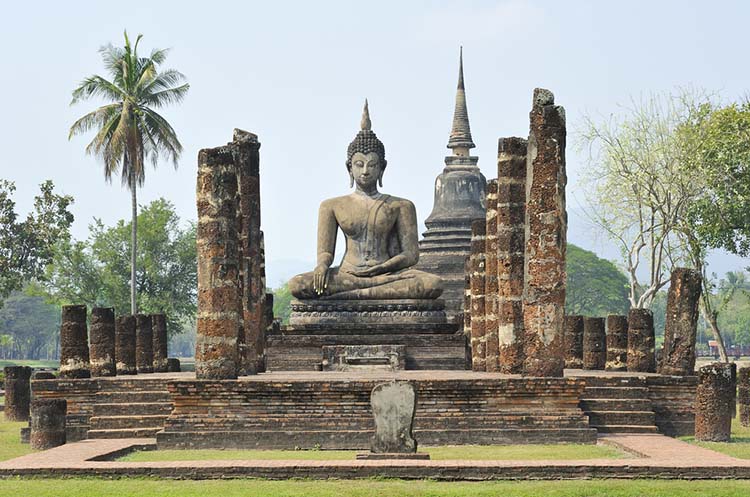
Wat Mahathat
Important temples of the central zone
Some of Sukhothai’s most important temples are found in the central zone. At the center of the town is the largest and most important temple of Sukhothai, the Wat Mahathat, where relics of the Buddha are enshrined.
Some of the finest examples of the Sukhothai style can be found in the central zone including the walking Buddhas of the Wat Sa Si and Wat Tra Phang Ngoen, the lotus bud chedis of the Wat Mahathat and the chedi surrounded by elephants of the Wat Sorasak.
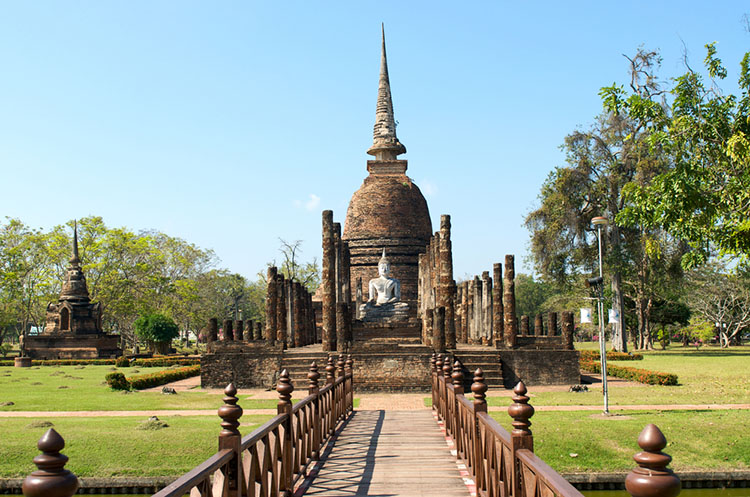
Wat Sa Si
The area contains several monuments predating the Sukhothai era, built when the area was under control of the Khmer including one of the oldest temples, the Wat Si Sawai with its three well preserved Khmer style prangs.
A 14th century footprint of the Buddha sculpted out of stone can be seen in the mondop of the Wat Tra Phang Thong, an active temple near the East gate. The King’s palace was located near the Wat Mahathat in the center of town. Today nothing remains. The wooden houses that once stood here have likewise long gone.
Other temples & shrines
The central zone contains more than a dozen smaller temples and shrines, in various states of preservation.
Wat Chana Songkhram
One of the largest chedis in Sukhothai is found at the Wat Chana Songkhram, located immediately North of the Wat Mahathat. The temple was probably built in the 14th century. Its name translates to “temple of the won war”.
A very large bell shaped chedi in the Sukhothai style sits on a square base. In front of it to the East is the viharn, of which the base and pillars remain. The Buddha image that sat on the pedestal to the back of the viharn is no longer there.
Flanking the principal chedi are two well preserved smaller chedis in a different style, their upper part consisting of receding storeys. The two chedis were probably built much later during the Ayutthaya period.
To the back are the remains of an ubosot or ordination hall surrounded by sema stones that mark the sacred area. Around the ubosot were a number of smaller chedis, of which just the base remain today.
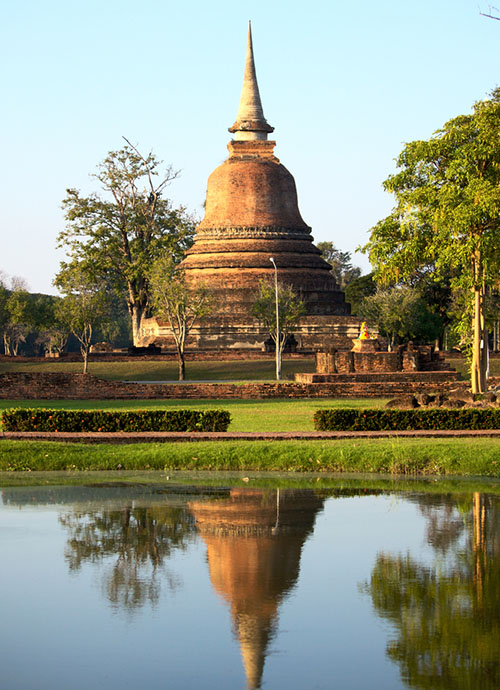
Wat Tra Kuan
The Wat Tra Kuan is a small temple located Northeast of the Wat Sa Si along the road to the North Sanluang gate. The early 14th century temple consists of a principal chedi, an ubosot and several smaller chedis. The main bell shaped chedi in Singhalese style is set on a square base. In front of it is the ubosot, of which little more than the base remains; it is surrounded by the base of several smaller chedis.
Wat Tra Phang Thong
The Wat Tra Phang Thong is an active temple located on a small island in the middle of a pond near the East gate, next to the Ramkhamhaeng National Museum. The small temple consists of a large chedi, an ubosot and a mondop housing a Buddha footprint.
The oldest structure is a brick bell shaped chedi in Singhalese style set on a square laterite base. The ubosot or ordination hall is a much more recent structure; it was rebuilt about a century ago on the ancient base of the Sukhothai era ubosot.
A recently built mondop houses a Buddha footprint sculpted in stone. The footprint was made in 1359 during the reign of King Li Thai. It was housed in the Wat Khao Phra Bat Yai temple on Phra Bat Yai hill, before it was moved to the Wat Tra Phang Thong.
Shaded by a large tree stands a white Sukhothai style image of a walking Buddha in the Vitarka mudra (teaching and discussion).
Ta Pha Daeng shrine
The Pha Daeng shrine located near the North gate along the road to Tak is one of the oldest monuments of the Sukhothai Historical Park. The shrine predates the Sukhothai era; it was built by the Khmer towards the end of the 12th century. The laterite shrine is set on a high base. On the East side a chamber protrudes out of the structure with a stairway in front of it.
During excavation works performed by the Thai Fine Arts Department several sandstone images of Gods and Goddesses were found. The images richly adorned with ornaments are exhibited in the Ramkhamhaeng National Museum.
Temples in the Central Zone
Some of the temples in this zone are:
Other Zones in the park
- Private or group tour
- Full day tour from Sukhothai
- Explore historical park & countryside by bike
From Chiang Mai
- Private or group tour
- One day or multiple days tour from Chiang Mai
- Explore historical park & countryside by bike
